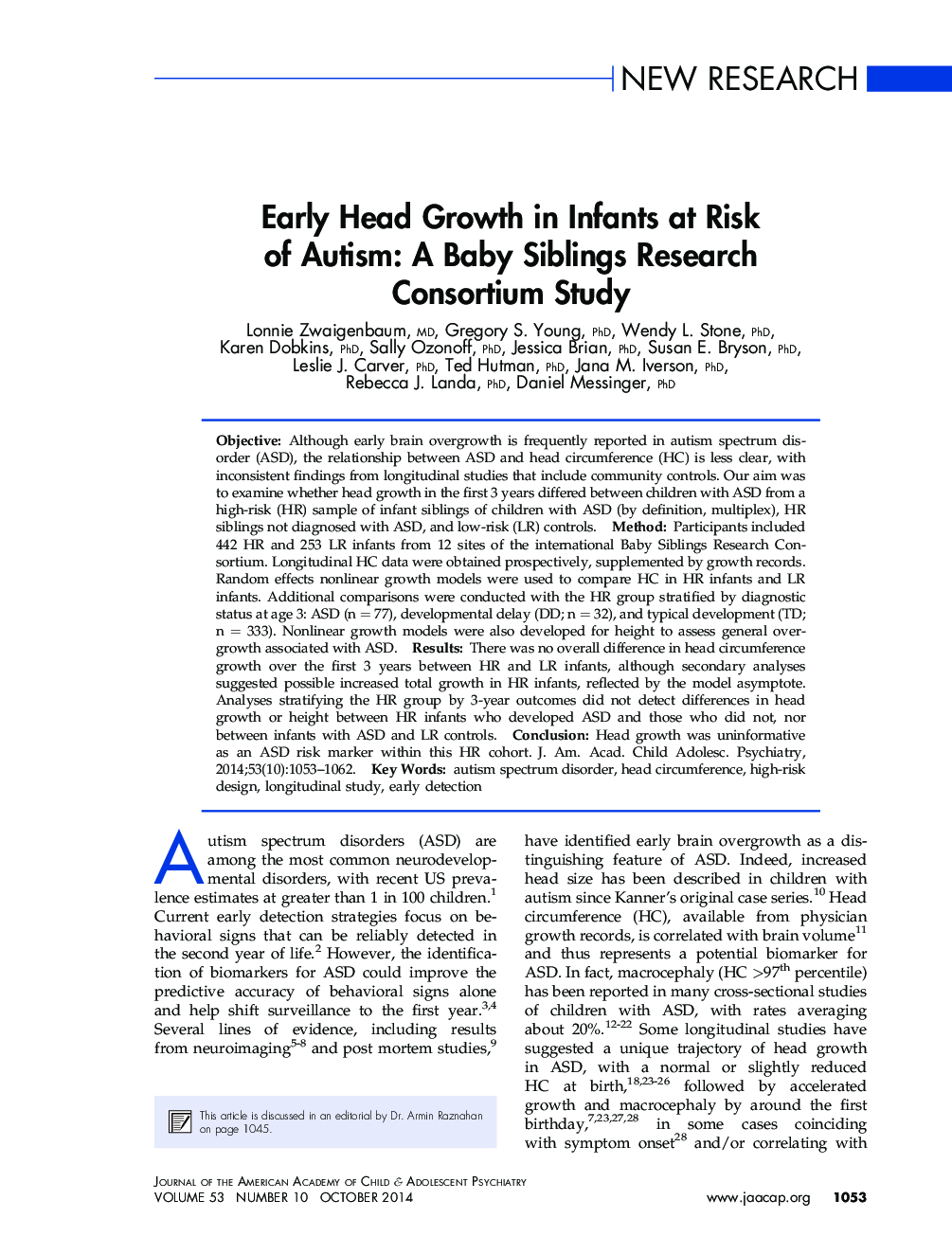| Article ID | Journal | Published Year | Pages | File Type |
|---|---|---|---|---|
| 324562 | Journal of the American Academy of Child & Adolescent Psychiatry | 2014 | 10 Pages |
ObjectiveAlthough early brain overgrowth is frequently reported in autism spectrum disorder (ASD), the relationship between ASD and head circumference (HC) is less clear, with inconsistent findings from longitudinal studies that include community controls. Our aim was to examine whether head growth in the first 3 years differed between children with ASD from a high-risk (HR) sample of infant siblings of children with ASD (by definition, multiplex), HR siblings not diagnosed with ASD, and low-risk (LR) controls.MethodParticipants included 442 HR and 253 LR infants from 12 sites of the international Baby Siblings Research Consortium. Longitudinal HC data were obtained prospectively, supplemented by growth records. Random effects nonlinear growth models were used to compare HC in HR infants and LR infants. Additional comparisons were conducted with the HR group stratified by diagnostic status at age 3: ASD (n = 77), developmental delay (DD; n = 32), and typical development (TD; n = 333). Nonlinear growth models were also developed for height to assess general overgrowth associated with ASD.ResultsThere was no overall difference in head circumference growth over the first 3 years between HR and LR infants, although secondary analyses suggested possible increased total growth in HR infants, reflected by the model asymptote. Analyses stratifying the HR group by 3-year outcomes did not detect differences in head growth or height between HR infants who developed ASD and those who did not, nor between infants with ASD and LR controls.ConclusionHead growth was uninformative as an ASD risk marker within this HR cohort.
